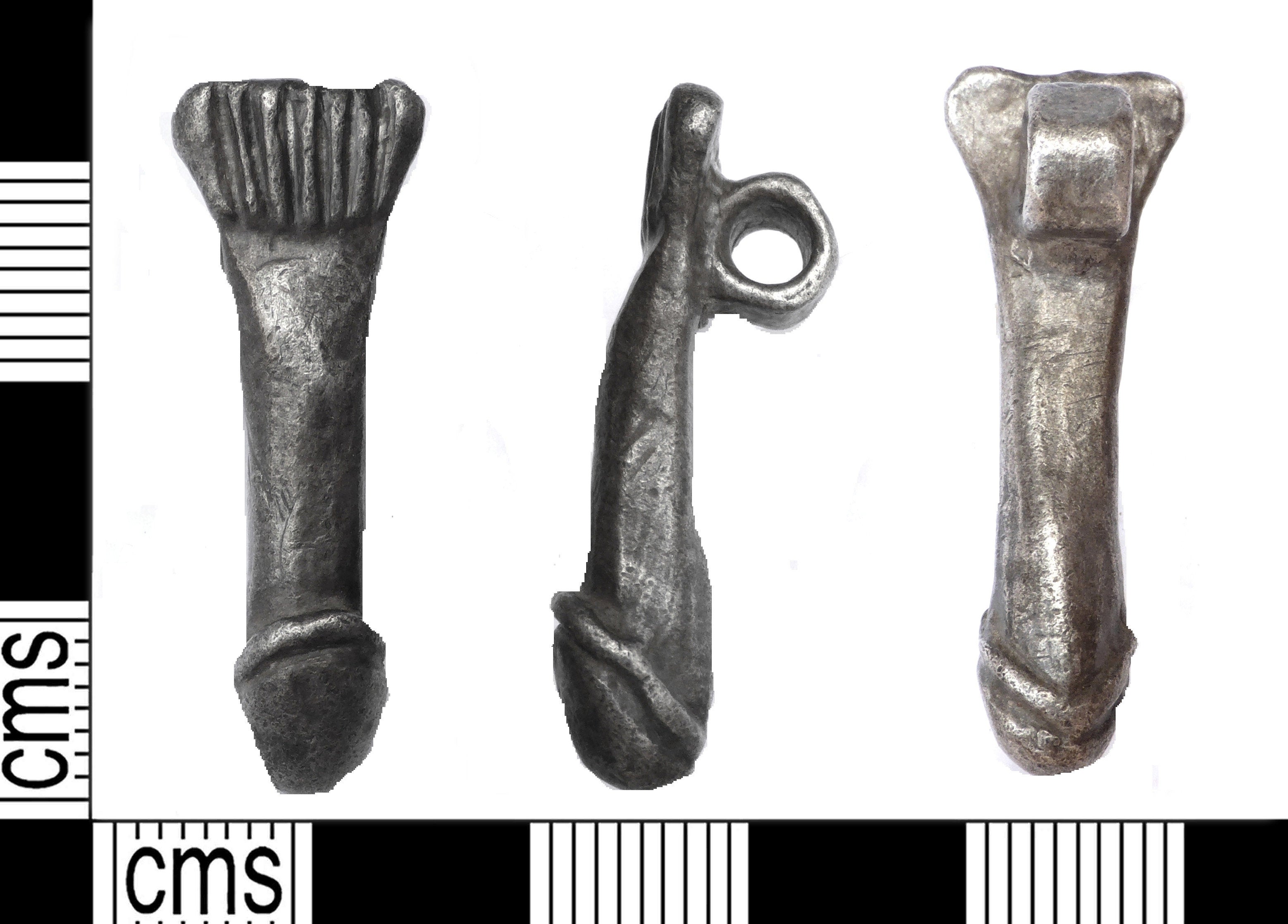
A silver Roman penis pendant, described as a “significant national find”, has been unearthed on a farm in Kent.
Metal detectorist Wendy Thompson discovered the phallic amulet, only the second silver example to be found in the UK from the Roman era and with a unique design.
Ms Thompson, 73, a retired estate agent, said: “It was only a tiny thing really. We were just as normal, covering a field up and down with a metal detector.
“I turned over this spade of earth and there it was, about eight inches down, I guess.
“I thought it was about 2,000 years old and it was.”
The silver penis, 1.2in long and weighing just 9.7g, is thought to date back to between 43AD and 410AD and after an inquest at County Hall in Maidstone on 26 May, it was classified as treasure.
Coroner Roger Hatch described the item, detailing its “foreskin, shaft and pubes”, before reading a short report from the British Museum.
The report said it was hard to narrow down an exact date for the pendant but the phallic nature of it “points to the Roman era”.
The find was made on New Year’s Eve, 2020 on a farm in Higham, near Gravesend and Strood.
Of the 451 recorded phallic objects from Roman Britain only one other is silver – a dual-sided pendant from the Caerleon bath-house.
That one features testes though the current one is without those, but does have pubic hair.

The coroner agreed with the British Museum and declared it a piece of treasure.
Phallic imagery was commonly expressed in Roman art and the penis was seen as a sign of power and virility.
Soldiers would often wear fist-and-phallus amulets for luck in battle and parents would kit their children out with penis-shaped pendants to protect them from the evil eye.
Hundreds of these objects have been found across Britain but they are usually made of copper.
A report into the object stated: “It is likely that this pendant is depicting a flaccid macrophallus, rather than an erect one, with the possibility that, rather than representing the ability to target and defeat the evil eye, a lack of control and an almost barbaric sexuality is suggested.
“The archaeological contexts of stratified examples, along with phallic wall carvings, such as at Hadrian’s wall, suggest a close association with military sites.
“This is supported by written evidence with Pliny attributing the phallus to the embodiment of Fascinus, the guardian of infants and generals.
“The association of the phallus with children is also mentioned by Varro who noted ‘a certain indecent object that is hung on the neck of boys to prevent harm coming to them’.
“The archaeological evidence also supports this association between children and phallic pendants, with five ‘fist-and-phallus’ pendants being recovered from a single infant inhumation at Catterick and a horned phallus amulet found in an infant burial in Colchester.
“This object is the first silver example of its class purported to be discovered and thus a significant national find.”
Ms Thompson said that the law required metal detectorists to report their findings within 14 days.
She added: “That is what every metal detectorist hates because you know you are going to lose sight of that object for years.”
She is still waiting for the pendant to be valued and once it is sold the money will be split between her and the landowner, as is common practice.
However, the money is not what drives her enthusiasm for digging up ancient objects.
She said: “I’m not after the money but it is nice to see it sold for its value. I don’t find things because they are valuable, it’s because of the history and you know that somebody once had that object. It’s magical really.”
SWNS







